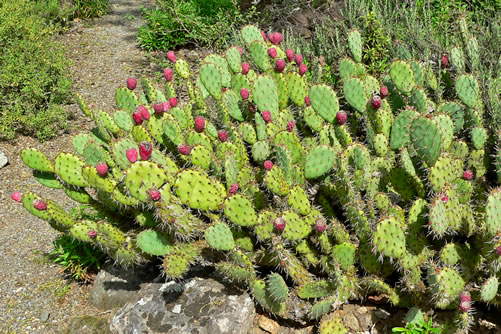On May 31, 1805, the Corps sailed past what is now known as the "White Cliffs of the Missouri," beautiful sandstone formations that resemble the ruins of an ancient city. Lewis wrote:
| The bluffs of the river rise to the hight of from 2 to 300 feet and in most places nearly perpendicular; they are formed of remarkable white sandstone which is sufficiently soft to give way readily to the impression of water. |
The Falls
Three days later, the Corps sailed to a fork in the Missouri River, which they named the Marias River after one of Meriwether Lewis' cousins. After some initial confusion regarding which of the forks was the true Missouri River, the Corps chose the northernmost fork, which proved to be accurate. Eleven days later, Lewis beheld the Great Falls of the Missouri River, which he declared, " The grandest site [he]ever saw." While the falls were beautiful, there was no easy way for the expedition to get through them. The Corps was forced to make an arduous portage of more than eighteen miles around the falls.
So Many Dangers!
The portage would prove to be one of the most difficult ordeals of the entire journey. Many in the Corps were forced to make the journey while sick, and most were plagued by swarms of mosquitoes and cactus-like plants called prickly pears, the spines of which constantly stuck in the feet of the travelers. Wild animals such as rattlesnakes, bears, mountain lions, and even wolverines were also a constant source of worry. William Clark, Toussaint Charbonneau, Sacagawea, and her baby were nearly drowned by a sudden, torrential storm that hurled large hailstones on them. Eventually, the Corps successfully moved all equipment and supplies via foot or wagon in scorching heat, around the falls, through rocky, unforgiving terrain. In his journal, Lewis praised his men for their toughness through such adversity:
| They are obliged to halt and rest frequently for a few minute. At every halt these poor fellow tumble down and are so much fortiegued that many of them are asleep in an instant. In short their fatiegues are incredible; some are limping from the soreness of their feet, others faint and unable to stand for a few minutes, with heat and fatiegue, yet no one complains. All go with cheerfulness . . |
Did You Know? |

The Prickly Pear is a common species of cactus found in western North America. These small plants proved very troublesome to the hands and feet of members of the Corps of Discovery, particularly during the portage around the Great Falls of the Missouri River. When touched, numerous small hairs are dislodged from the plant that get stuck in the skin, causing significant pain. |